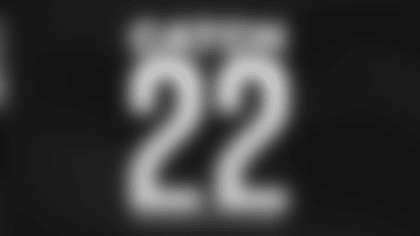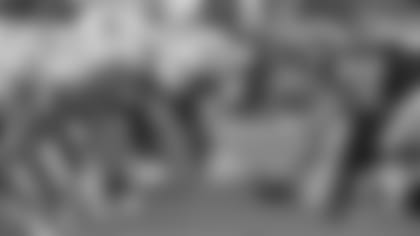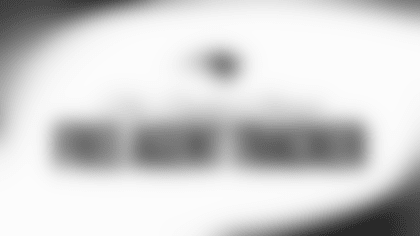The basic questions never change. Can he rush the passer? Can he stop the run? Can he drop into coverage?
Does he have the right combination of size, speed, and strength? How are his instincts? Will he give optimum effort on every down?
NFL talent evaluators stick with the same checklist for all defensive front-seven prospects.
But for those scouting for a team with a 3-4 base defense, there is another critical question: Is he versatile?
For the most part, collegiate defensive linemen play in four-man fronts. That means a majority of ends lack the size necessary to play the same position for a three-man team in the NFL. And that is why many of them who are selected for a 3-4 scheme wind up moving to outside linebacker.
If you've spent your collegiate career lining up with a hand on the ground, standing up before the snap -- along with dropping into coverage and other aspects of playing linebacker -- is a significant change.
"That always is something you have to deal with," says New York Jets coach Eric Mangini, whose defense uses the 3-4. "You look at (college) defensive ends and try to project how they'll look standing on their feet. You try to look at (videotape of) plays where they're dropping in a zone blitz or their workouts.
"Will they be able to make the switch from a guy who has a hand in the dirt versus a guy who is standing up?"
And can they do both? The NFL already has some end/linebacker hybrids whose ability to handle both positions enhances the effectiveness of their respective defenses. They include San Diego's Shawn Merriman, Baltimore's Terrell Suggs, New England's Mike Vrabel, and Indianapolis' Dwight Freeney.
This year's draft seems to have players capable of doing the same.
Virginia's Chris Long has that sort of versatility. He is seen as a perfect fit as an end, his college position, in a 4-3 team, but also can play linebacker in the 3-4. Not coincidentally, the son of Pro Football Hall of Fame defensive end Howie Long sits atop numerous mock drafts.
"There's not a lot of 3-4 college defenses, and the way Chris plays in Coach (Al) Groh's (Virginia) defense, he's as NFL-ready as you can be from a 3-4 standpoint," says Kevin Colbert, director of football operations for the Pittsburgh Steelers. "He plays a very difficult technique and he does it very well, so he's a perfect 3-4 defensive end. Could he stand up and be a linebacker? Absolutely. I'd say he's rare for a college defensive lineman, especially more specific to a 3-4 defense."
"Interestingly enough, people talk about what a transition it would be for me to be a 3-4 outside linebacker, but let's not forget that I never played in a 4-3 in college, either," Long points out. "I was a base defensive end in a 3-4. Either position would be a fresh start for me and an opportunity to learn and an opportunity for me to progress as a player."
Ohio State standout end Vernon Gholston is another extremely versatile athlete. At the NFL Scouting Combine, he showed incredible athleticism with a 35½-inch vertical jump (best among defensive linemen), a 10-5 broad jump, and remarkable strength with 37 reps in the 225-pound bench press. As a result, his draft stock soared, to the point where he has become a serious consideration for the top overall pick.
Florida end Derrick Harvey isn't mentioned as a candidate for that No. 1 spot, but he, too, has the type of versatility that teams covet.
Ditto for Auburn outside linebacker Quentin Groves (although there are concerns stemming from minor surgery he underwent last month to treat an abnormality in his heart's electrical system that can result in rapid heart beats) and Purdue's Cliff Avril.
Although Avril spent most of the past two seasons at defensive end after beginning his collegiate career at outside linebacker, he isn't bothered that most NFL teams view him as an outside linebacker.
"It doesn't matter to me," Avril says, echoing the sentiments of the others in the same situation. "I feel like I'm athletic enough to drop back into coverage and be a good pass rusher. I feel like I can do both."
The Dolphins supposedly have yet to commit to a base defensive look. They were a 4-3 team before Bill Parcells took over the team's football operations. Parcells isn't the coach, but he employed the 3-4 throughout his distinguished career of prowling sidelines in the NFL.
The New York Jets and New England Patriots also use the 3-4, and would certainly have an eye toward enhancing their respective front sevens with the sixth and seventh overall choices, respectively.
Other 3-4 teams -- especially those with lower picks in the first round (Dallas, Pittsburgh, San Diego, and San Francisco) -- could also use choices in the latter part of the draft on smallish collegiate ends who they will try at outside linebacker.
Regardless of where they find them or how they utilize them, teams can't have enough good pass rushers. The ability to put heat on the quarterback is vital to a team's overall defensive success -- just ask the New York Giants -- because it can make up for other shortcomings, such as poor deep coverage.
"When you have to get a stop in the passing game in the last four minutes," Colts president Bill Polian says, "the pass rusher is crucial."






































